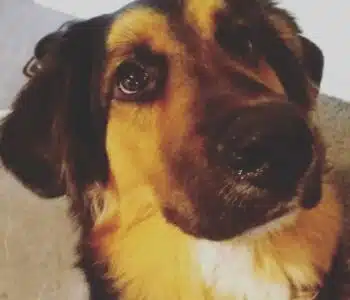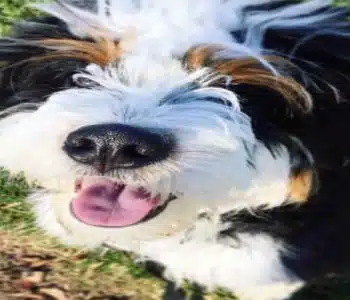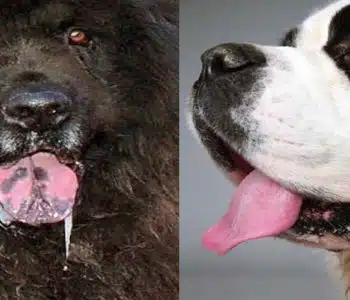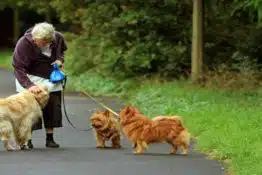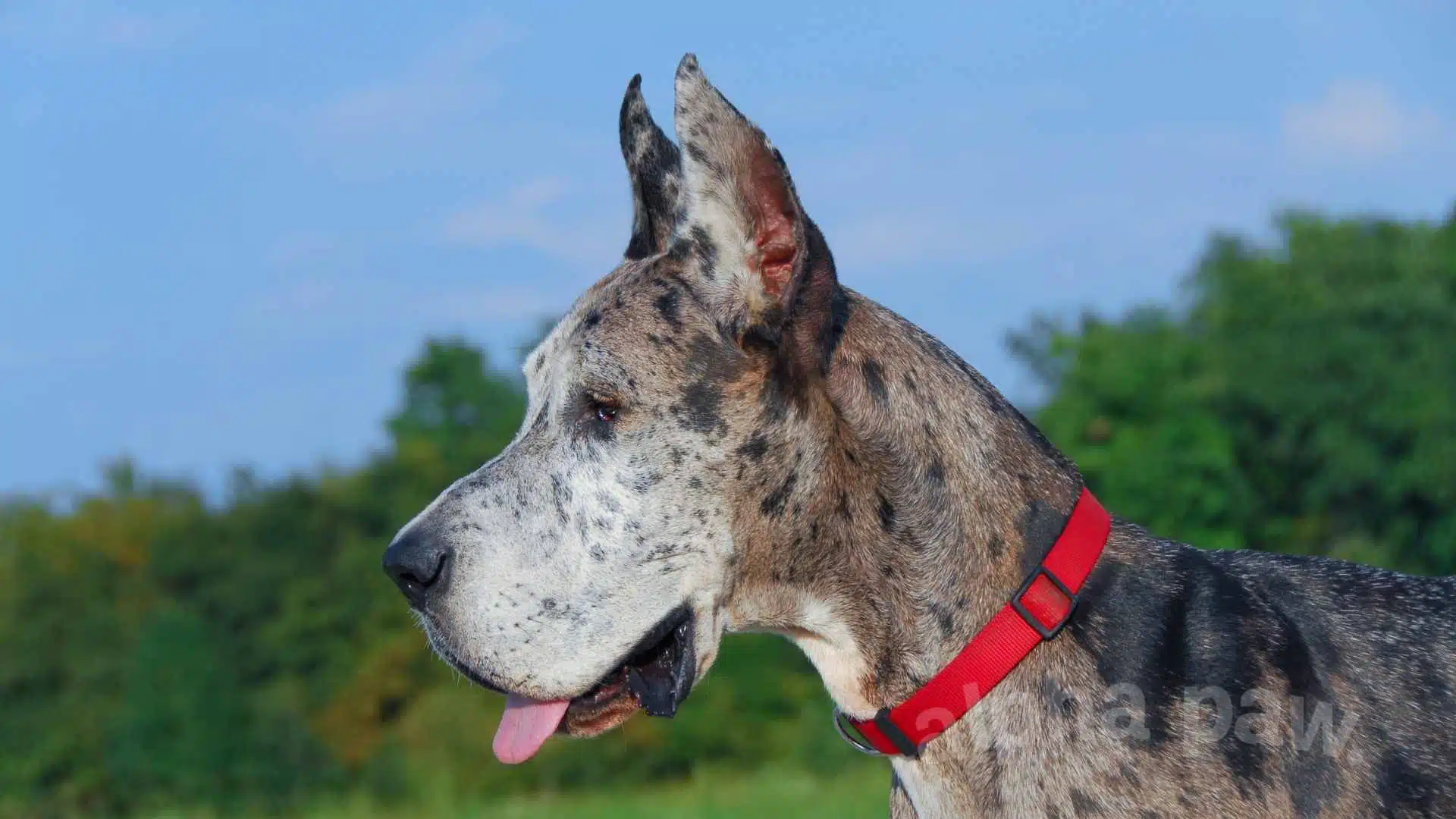
Great Dane Dachshund Mix: When Big and Small Collide
As unbelievable as it may sound, it is true! The Great Dane Dachshund mix is an existing hybrid dog, and it is more controversial than you can imagine!
If you’ve never been one to follow the path often trodden and have always wanted a breed that can match your unconventional nature, you won’t find a more outlandish cross than this one. This pup breed is the golden middle of its parents, and as far as Doxie mixes go, this is certainly the largest one!
While some people are vehemently opposed to crossbreeding two dogs that differ as much as the Dachshund and the Great Dane do, others are thrilled with the idea and emphasize the many health benefits of intermixing. If you are interested in hearing more about the cross-breed with the most humorous pet name out there, delve into Alpha Paw’s Great Wiener special!
3 Reasons Why You Should Not Adopt the Dachshund and Great Dane Mix
Before we dig deeper into this unorthodox breed, we want to set the record straight. Like all other dog varieties, this one has several traits that might prove too overwhelming for prospective owners. We won’t beat about the bush, though. Without further ado, here are the worst things about the Great Dane Dachshund cross:
- They are a mystery. Not only are these pups extremely rare, but there is limited information available about this cross. You could end up with a feisty, stubborn fellow of the likes of a Dachshund or a gentle lazy bug that is a Dane. That is too big of a lottery for most prospective owners.
- You cannot know how big they will get. In line with what we said above, the physical appearance is also left to chance. If your Great Wiener puppy grows up to be enormous like their Great Dane parent, will you have enough time to devote to taking them out and meeting their activity needs?
- Their origin is unpredictable. These hybrids usually come from illegal breeding mills, and their parents are cruelly treated and used only for reproduction purposes. As Doxie Danes are mostly available in shelters, they could have abandonment or abuse issues, and you are unlikely to get any details about their parents. If adopting a puppy with such a background stands against your ethical principles, this is the wrong breed for you.
With luck, it will take more than what you saw above to throw you off the scent and change your mind about adopting this pooch! If that is what happened, don’t despair — we’ve got more suggestions for you! Here are more great Dane mixes:
| Pitbull Great Dane Mix | Great Dane Lab Mix |
| German Shepherd Great Dane Mix | Corgi Great Dane Mix |
| Husky Great Dane Mix |
If you’re looking for a dog that is not the run-of-the-mill sort that you can see on every corner, why not take a look at the top 10 world’s most expensive dog breeds to own? They may be pricey, but they are so unusual that they are worth every cent!
Best Supplements for Great Dane Dachshund Mix
Support the health and vitality of your Great Dane Dachshund Mix with the best supplements designed to meet their unique nutritional needs. Enhance their well-being with our top picks for supplements that cater specifically to Great Dane Dachshund Mix breeds.

- Joint health support for dogs: cosequin, the #1 veterinarian recommended retail joint health supplem
- Omega-3 fatty acids: each soft chew also contains omega-3 fatty acids to help support skin and coat
- Manufactured in the united states with globally sourced ingredients: cosequin is a high-quality, dog
- From the #1 veterinarian recommended supplement company*: nutramax laboratories veterinary sciences
- Backed by science: nutramax laboratories veterinary sciences supplements are veterinarian formulated

- This natural fish oil additive supplement works to support your pal’s skin, coat, hips and joints, heart and immune system.
- The premium salmon oil is rich with omega-3 and -6 fatty acids from EPA and DHA to promote soft skin, a shiny coat and good overall health.
- May also help support proper hip, joint, heart and immune function.
- Makes a yummy alternative to capsules or soft chew supplements—simply add to your pet’s favorite meal.
- Great for small, medium and large breed dogs or cats.

- Your sidekick deserves a shiny coat and healthy skin she can feel proud of and show off.
- A therapeutic blend of organic horsetail, dandelion, spirulina and bladderwrack help maintain hair shafts and follicles to promote healthy skin and hair.
- Give your gorgeous girl the capsule whole or mix it into her food.
- PetAlive supplements are made from lab-tested, raw ingredients with no added fillers, gluten, artificial colors, flavors or preservatives.
- Made in FDA-registered, cGMP (current Good Manufacturing Practice) compliant facilities.
3 Reasons Why You Should Consider Getting the Dachshund Great Dane Mix
Now that we have covered the traits that could make you regret going for a peculiar breed like this one, let’s see why you shouldn’t miss out on having a Great Dane Dachshund pup! These dogs boast some truly fantastic characteristics that will make you fall head over heels for them. Here is what we love the most about Great Wieners:
- They are splendid family pets! Not only are they super friendly and affectionate, but they are endlessly patient with children and accepting of other pets. What more could you wish for in a family dog?
- They tend to be perfectly healthy. Although their looks are a gamble, their health usually isn’t. Cross-breeds generally have fewer health issues than their recognized parents, and the same applies to this unlikely breed combo. (Learn about Dachshund health issues here.)
- They are the ideal small apartment dwellers. Both of their parents are among the best city dog breeds. No matter how big or small this mixed pooch turns out to be, you can rest assured that they will adapt even to the tiniest apartments.
The Great Dane Dachshund Mix Background
When you first heard about this cross, the chances are that the question “How?” popped in your head. If so, you are not alone. Anyone even remotely familiar with the Great Dane and the Dachshund breeds likely found themselves wondering how the offspring of these two dogs even came to be.
Yet, the cross-breed exists. To fully grasp what the dilemma stems from, let’s take a minute to talk about the parent breeds.
The Dachshund
The Dachshund is a dog breed that originated in Germany, most likely in the early 18th century. German breeders combined English, German, and French Terriers and Hounds to create a variety that would have the strong prey drive of a Hound dog but retain the miniature stature of a Terrier. As a result, the Dachshund was born.
This breed is characterized by its lean, elongated torso, short legs, pointy snout, and paddle feet. All these traits were chosen so that Dachshunds could hunt badgers and other den creatures more effectively. To be able to catch these crafty animals, the pup had to pick up their scent and then dig their way into the lairs to either catch or chase their prey out. Their yappy nature was useful too as it helped hunters find them (and their prey) with ease.
The Dox’s history as a hunting dog is apparent in the breed to this day. This pooch’s favorite pastimes are roaming around, sniffing, and digging up the yard. They are exceptionally lively, which is undoubtedly a big part of their charm that even Picasso wasn’t resilient to! We’ve written up a comprehensive Dachshund breed guide if you’d like to learn all there is to know about these adorable lap dogs.
While Doxies love to cuddle and are extremely attached to their humans, they also have quite a stubborn temperament. This trait makes them challenging to train, but it also means they are super intelligent and independent. If you like the sound of that, here are additional facts you should know about Dachshunds.
The Great Dane
The Great Dane is a mighty giant and the largest dog breed in the world. These gargantuan hounds were also bred in Germany and carry the genes of the staggering English Mastiffs and Irish Wolfhounds. A short-haired, long-legged, muscular breed, Great Danes can reach over 40 inches in height and weigh well over 70 pounds!
Great Danes were mostly used at courts to hunt boars, deer, and bears. They were often kept indoors to guard the royals from assassins. With the rise of firearms, the need for these catch dogs disappeared, and they were nearly extinct. The few that remained were kept as luxury pets, but fortunately, the breed survived to this day.
The Great Dane’s history has certainly had an impact on their personality. While they are agile and strong, they don’t exhibit a strong prey drive. They seem to have kept their courtly habits, as they enjoy lounging around, snuggling with their owners, and showing their affection. They are friendly towards other house pets and revel in mingling and playing with children. Contrary to their impressive size, these gentle giants don’t have an aggressive bone in their bodies!
Apart from having an unexpectedly tame temperament, these colossal dogs are also super quiet! They bark so rarely that your neighbors won’t even suspect there is a massive hound on the other side of the wall. That is why they are one of the most beloved companion dogs today and ideal goggles for city apartments. They are not particularly famous for their bravery, a trait that inspired some of the hilarious Great Dane memes!
For all of their exquisite characteristics, breeders love crossing Great Danes with other dogs. Here are the 49 Great Dane mix breeds you may not have heard of before.
The Appearance of the Dachshund Dane Mix
Considering the vast difference in the physical traits of the parent breeds, you can never know what the pup will turn out to be like. Most of the time, their height is exactly between that of the parents, but that is far from being set in stone. They also seem to inherit the long body of the Dachshund, but their legs are significantly lower thanks to the Great Dane’s influence. The coat is typically short, but the color varieties are plenty.
| Weight | Around 50 pounds, on average |
| Height | Around 16 inches, on average |
| Size | Medium |
| Coat type | Short, sleek, and shiny; sometimes coarse |
| Coat color | Fawn, brindle, black, harlequin, blue, mantle, chocolate, merle, or a combination of two colors |
| Shedding | Low |
| Eyes | Black, brown, hazel, blue (rare) |
| Nose | Leather, chocolate, tan |
| Ears | Floppy, triangular |
| Temperament | Friendly, playful, gentle, clever, affectionate, loyal, and slightly stubborn |
| Life expectancy | 10–14 years |
| Hypoallergenic | No |
| Kid-friendly | Yes |
| New owner friendly | Yes |
| Breed recognition | The American Kennel Club (AKC):
|
The Personality of the Great Dane and Dachshund Dogs
The temperament of this uncommon hybrid greatly depends on which parent the puppy takes after. While Dachshunds are rather lively, Great Danes prefer to spend time lounging around the place. The Doxie is a yappy fellow, whereas the Dane rarely barks at all.
What they have in common is a loving disposition towards their owners. They love to show affection and play with their human families. Both breeds are also excellent guard dogs, and, although open to strangers, they will be on alert and protect their owners. With that in mind, they can develop an aggressive streak.
What Does the Great Dox Eat?
The larger you Great Dane Dachshund gets, the more it will eat. On average, this mix will do well on 1–1.5 cups of kibble divided into two daily meals.
When it comes to your puppy’s diet, you should strive to feed them with the best quality meals. Although two dog foods will have the same ingredients, it all comes down to their origin and quality (here’s a handy list of ingredients to avoid in dog food). With that in mind, we’ve selected the premium quality food brands that you could try out:
- Best canned dog food
- Best puppy food brands
- Best dry dog food for small dogs
- Best senior dry dog food
If you are curious to see why some brands make less nutritious food than others, check out our worst dry dog food post.
Are Dachshund Danes Hard to Train?
Although Doxies have an innate stubbornness, which makes them hard to train, Great Danes are exceptionally obedient by nature and quickly adapt to training methods. What their cross puppies turn out to be is a sheer lottery!
This breed is so rare that there isn’t a lot of information available on them. Most of the time, owners report that their dogs housebreak quickly and learn new commands with ease, with occasional bouts of resistance. If your pooch is obstinate, avoid making these training mistakes — otherwise, they’ll own you!
In case your pup inherits the Doxie’s obstinate streak, soften them up with delicious rewards by the best dog treat brands on the market. Use that sort of positive encouragement every time your dog obeys, and you will see them comply in no time! Try to stay away from these worst dog treat brands to keep your pooch healthy.
If the Doxie in your Great Wiener is giving you trouble, learn how to train a Dachshund and how to potty train them in no time at all!
Are Great Wieners Good Family Pets?
The Great Dane Dachshund mix has an amiable character that makes them perfect for families. They enjoy playing with children and gladly put up with their tugging, pulling, and probing without any complaints!
This cross-breed pup is playful and good-natured, and they also love spending time in the company of humans. They guard their families and also lend a helping hand around the house — you can trust them to rearrange your shoes whenever you leave them out of the closet!
The Great Dane Dachshund Health Problems
Designer dogs usually exhibit fewer health issues than their parent breeds, but that fact doesn’t guarantee that every pup will be the spitting image of health. Here are the most likely illnesses of Dachshund Dane mix puppies:
- Intervertebral Disc Disease. This is a standard ailment of the Doxie breed. If your pooch inherits the elongated back characteristic of Dachshunds, it could be prone to disc degeneration and herniation. Keeping their bones and joints healthy is essential.
- Bloat. This is a dangerous condition that affects most large dog breeds, including Danes, but it is also common in smaller dogs, such as Dachshunds. If you notice a change in your dog’s food intake accompanied by a swollen abdomen, take your pup to the vet.
- Cancer. Great Danes are among the dog breeds with the highest cancer rate, so their crosses are at risk of inheriting the cancer genes.
- Heart problems. Cardio-vascular issues are so common among Great Danes that they are dubbed the “heartbreak” breed. That could be the reason why they are one of the breeds with the shortest lifespan (Doxies, fortunately, live much longer lives, and your hybrid might, too). The larger your pup turns out to be, the greater disposition it could have toward suffering from heart failure.
These pooches could inherit the propensity toward the following health issues that are also common in Dachshunds:
Regular checkups are the best ways to keep your dog healthy, so don’t forget to schedule one every six to 12 months.
| Major concerns | Minor concerns | Occasional tests |
|
|
|
How Active is The Great Dox?
The activity requirements of your pup will depend on their size and overall health.
If they grow up to be medium to large, they will need more exercise — even up to 15 miles and 90 minutes of walking each day. If they end up being small, closer to their Dachshund parent, they need half the walk time.
Dogs suffering from a health condition, such as IVDD, shouldn’t have strenuous exercises, and their activity level should be brought down to a minimum.
| Activity level | Recommended miles/day | Activity minutes/day |
| Medium | 5–15 | 30–90 |
Dachshund and Great Dane Grooming Requirements
In terms of the amount of grooming they need, these pups are a breeze to keep. They are mild shedders, so they only need occasional brushing; about once or twice a month should be enough. The Great Dox has little to no odor, and you can bathe them only when needed. When you do give them a bath, make sure to use all-natural dog shampoos.
The smaller they are, the more prone to teeth issues they get. You will have to keep their pearls clean by giving them lots of good-quality dental chews and brushing their teeth at least twice a week. To save your floor from tears and scratches, clip your pup’s nails every three to four weeks, and you’re golden!
In case you are a first-time owner, and you could use some more help with keeping your dog happy, make sure to check out our care tips for new dog owners and Dachshund care tips — you’ll thank us later.
| Brushing frequency | Brushes for the Great Dane Dachshund Mix |
| Monthly |
|
What Is All the Fuss About?
Although the Great Dane and Dachshund mix comes from the two of the best dog breeds to adopt, their parent breeds are so diametrically different that many people find their crossing to be unethical, even inhumane.
Dogs have an incredibly strong mating drive, and if the female is in heat, no obstacle in the world could stop the male from mating with her. Believe it or not, that applies to the unlikely pairing of the tiny Dachshund and the gigantic Dane!
Although these dogs can mate naturally, the reality is that most of the Dachshund Great Dane crosses are the result of artificial insemination. There are countless backyard breeding clubs that carelessly and cruelly inseminate any female dog with any male specimen they have on hand for pure profit.
Crossing these two breeds like that is not only unethical but also life-threatening for the dogs in question. If the female parent is a Dane, and the male is a Doxie, no problems arise. When the mother is a Dachshund and the father a Great Dane, then both the mother and the cubs are in danger. The puppies usually grow too big for the mother to bear even before she is ready for labor, which can be fatal for all of them. Even if the female lasts long enough to give birth to her litter, she needs to have a Caesarean, which has a better prognosis but is also extremely risky.
Another Reason to Adopt a Great Wiener Puppy
The practice mentioned above is one of the reasons why official dog clubs and organizations, such as AKC, don’t recognize hybrids as official breeds. Although designer dogs have their own clubs, you are unlikely to get a Dachshund Dane mix with official documentation.
That is not to say that this particular cross doesn’t have an exquisite pedigree. Ancestry does matter, especially in terms of familiarizing yourself with the possible health concerns that your pup could inherit. That is why you should get a puppy only from reputable breeders that can supply reliable information on the parent dogs.
Fortunately, crossbred puppies tend to have fewer health issues than purebred ones, and the same applies to this controversial mix. When two purebred dogs of the same variety mate, their genes replicate, which means their offspring will inherit the same illnesses their parents were prone to.
That isn’t true for crossbred pups. Their genetic makeup is a mix of their parent’s genes, which means they cannot inherit all the health problems their mom and dad suffered from. They will get only some of the problem genes. Experts even claim that crossbreeding is an excellent way of eradicating some of the illnesses specific breeds are susceptible to.
The doggies that were born in backyard crossbreeding clubs also deserve a loving home. If you don’t mind learning about your pup as you go, we do encourage you to rescue a Dachshund Great Dane puppy or even an adult dog when you get the chance. You won’t have any certificates to show for your pup, but adoption will make the life of the lucky little fellow so much richer — and yours, too!
In the Mood for More Doxie Mixes?
In case what you read about the Dachshund mixed with Great Dane didn’t sound like an ideal pup for you, take a look at other Doxie cross-breeds in the table below. Before we bid adieu, have a blast with some of the funniest Dachshund memes and gifts we could find!
FAQ: Great Dane Dachshund Mix
Q: Is there a Great Dane Dachshund Mix?
A: While the Great Dane Dachshund mix is not a standardized or common breed, the world of dog breeding can result in unique mixes. It’s essential to approach mixed breeds with caution, considering the potential health and temperament variations.
Q: Why is the Great Dane considered a “heartbreak breed”?
A: The term “heartbreak breed” for Great Danes often refers to their relatively short lifespan. Great Danes are known for their large size, and larger dog breeds, in general, tend to have shorter lifespans. Proper care, including regular veterinary check-ups, a balanced diet, and a healthy lifestyle, can positively impact their well-being.
Q: What breeds make up the Great Dane?
A: The Great Dane is not a mix but a distinct breed. Its origins can be traced back to ancient mastiff-like dogs. While the exact breeds used in its development are unclear, it is believed to have involved Greyhounds, Irish Wolfhounds, and Mastiffs.
Q: How big do Great Danes get?
A: Great Danes are among the largest dog breeds. Adult males typically stand between 30 to 34 inches at the shoulder and weigh between 140 to 175 pounds, while females typically stand 28 to 32 inches and weigh 110 to 140 pounds.
Q: How fast do Great Danes grow?
A: Great Danes undergo rapid growth during their puppyhood. In the first year, they can gain about 100 pounds or more. It’s crucial to provide a balanced diet to support their growth and prevent joint issues associated with their large size.
Q: American Great Dane vs. English Great Dane – What’s the difference?
A: While there isn’t a strict distinction between American and English Great Danes, some enthusiasts use the terms to describe variations in conformation and breeding practices. Generally, American lines may be leaner and taller, while English lines may be more massive and have a stockier build.
Q: When do female Great Danes stop growing?
A: Female Great Danes typically reach their full height by around 18 months but may continue to fill out and gain weight until they are around 2 to 3 years old. It’s essential to monitor their diet and growth to ensure healthy development.
Q: Why do Great Danes lean on you?
A: Great Danes are known for their affectionate and gentle nature. Leaning is a typical behavior in large breeds like Great Danes, and it’s often a sign of trust and a desire for closeness. They may lean against their owners for comfort and companionship.
References
- https://en.wikipedia.org/wiki/Dachshund
- https://en.wikipedia.org/wiki/Great_Dane
- Beauchesne, Ryan. Crusoe, the Celebrity Dachshund: Adventures of the Wiener Dog Extraordinaire. Griffin Publishing, 2015.
- Jensen, V. F., and K. A. Christensen. “Inheritance of Disc Calcification in the Dachshund.” Journal of Veterinary Medicine Series A, vol. 47, no. 6, 2000, pp. 331–340., doi:10.1046/j.1439-0442.2000.00297.x.
80% of Dogs Develop Arthritis or Joint Pain by 7 Years old – Here’s How to Protect Them
Most of us train our dogs when they are puppies to jump up on furniture. We think it’s harmless (and easier than always lifting them), but for dogs, couches and beds are very high compared to the size of their bodies.
Every time they jump it compresses their back and applies enormous force to their joints.
It’s no wonder that an incredible 80% of dogs experience arthritis or joint pain by only 7 years old.
Luckily, there is a vet-recommended solution.
It’s the PawRamp by Alpha Paw. An adjustable ramp that allows dogs to safely get on and off couches and beds. PawRamp makes joining you in bed or on the couch effortless and fun.
As a bonus, you can use code SAVE35 to get $35 off the PawRamp today.



